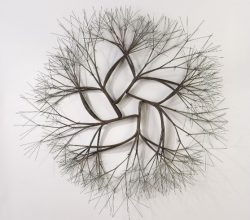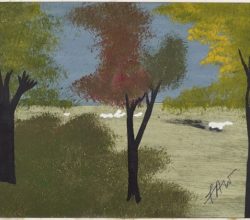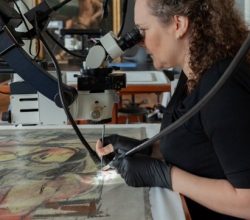
Ruth Asawa: Citizen of the Universe
Lauren Dyer Amazeen | Ocula | 25th May 2022
Asawa was taught as an art student to respect the integrity of her materials. She tried painting, producing leaf shapes and blobby biomorphic forms, before discovering wire and its potential to be woven into expressive sculptural forms. Early recognition in New York faded once she moved to the west coast, some no doubt sensing a “craft” element in her unconventional work. Now resurrected, her work is featured prominently in this year’s Venice Biennale. A recent biography is reviewed here.



